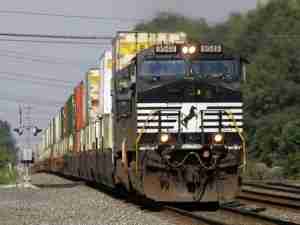There is good news for ports in the latest highway bill. Today, the Senate Environment and Public Works (EPW) Committee approved the just released America’s Transportation and Infrastructure Act 2019 to reauthorize Fixing America’s Surface Transportation Act (FAST Act). Although the law does not need to be reauthorized until next year, the EPW Committee wanted to be the first to offer a proposal. Other committees will need to approve separate titles, including the Senate Commerce, Science, and Transportation Committee that is expected to release its title in the early fall and will focus more on multimodal programs outside of the highway title. The House Transportation and Infrastructure Committee is also working on a bill, but it is not projected to be released until the spring of 2020.
The FAST Act five-year reauthorization (2021-2025) calls for $287 billion in spending—a 27 percent increase over existing funding and the highest funding level ever authorized for the highway program. As in the past, 90 percent of the funding is distributed to states by formula. While this is a positive step forward, the final funding levels will ultimately have to take into account the revenues coming into the Highway Trust Fund which are currently less than the Senate EPW’s authorization numbers.
One of AAPA’s highest priorities is to waive the multimodal caps on both state funding and INFRA grants. The EPW bill increases the multimodal caps from 10 percent to 30 percent for both, which is promising. Thanks to those ports who highlighted multimodal funding as a priority in meetings with their Congressional delegation. It made a big difference.
Here is a list of key provisions in the bill that impact ports:
• Section 1109; the Surface Transportation Block Grant Program increases eligibility to include rural barge landing, dock, and waterfront infrastructure projects.
• Section 1110; the Nationally Significant Freight Highway projects or INFRA, raises the multimodal cap to 30percent and provides additional funds for rural and small projects. It also provides funds for a pilot project to encourage a more significant non-federal share. The INFRA title increases funding levels to $5.5 billion over five years.
• Section 1114; the National Highway Freight Program that was established under the FAST Act increases the maximum number of highway miles a state may designate in rural and urban areas. A maximum of 600 miles can be designated, which could help ports that were not included in the past. The multimodal cap for state funding also increased from 10 percent to 30 percent, a priority for AAPA.
There are several environmental grant programs that would be beneficial to ports that are also included in the bill:
• Section 1401; authorizes the Department of Transportation (DOT) to issue grants for charging and fueling stations similar to what is included in the Green Corridors program, supported by AAPA.
• Section 1402; establishes a DOT grant program to reduce idling and emissions from port facilities including port electrification projects. The annual authorization level starts at $60 million and rises to $90 million within 5 years.
• Section 1404; allows states to use Congestion Mitigation and Air Quality program funds for inland waterway and marine highway projects.
• Section 1405; adds new strategies for inclusion within the national freight strategic plan, including strategies to promote resilience, domestic economic growth, competitiveness, and strategies to reduce local air pollution and water runoff.
• Section 1407; establishes a supplemental formula and competitive grant program to help States improve the resiliency of transportation infrastructure.
• Section 1408, extended the reauthorization of the Diesel Emissions Reduction Act grants through 2024. The language also requires EPA to be more flexible with diesel alternatives. This section may give ports more flexibility with clean truck programs in smaller areas.








